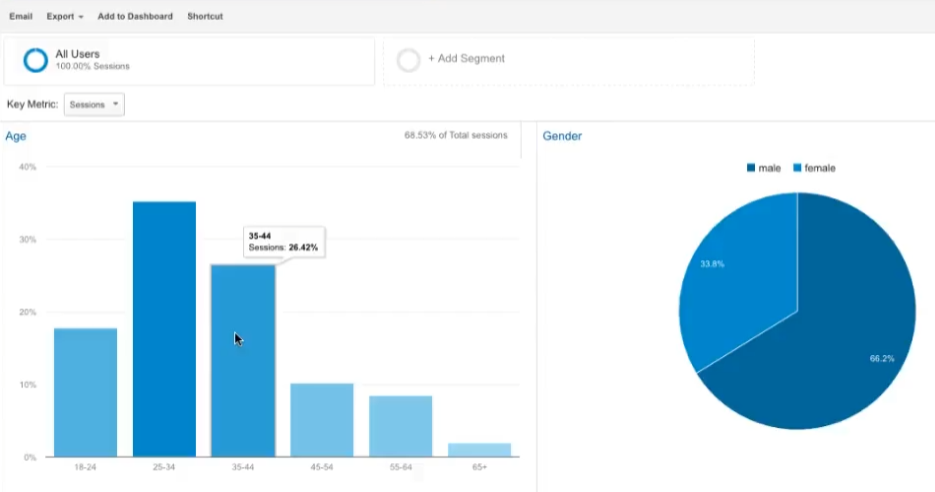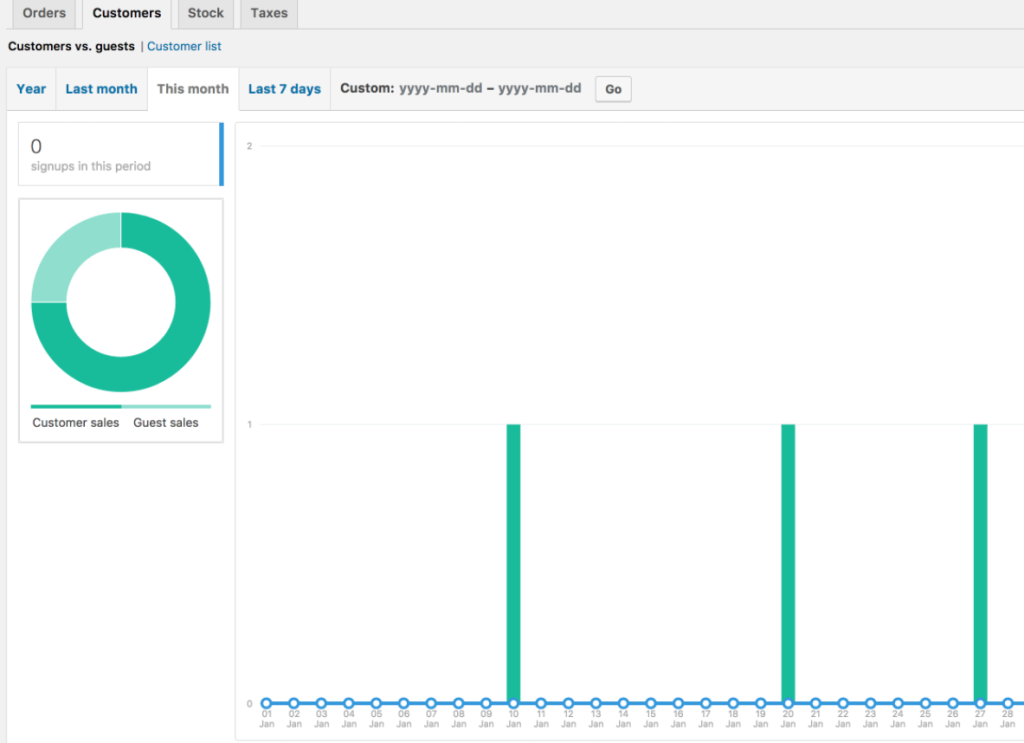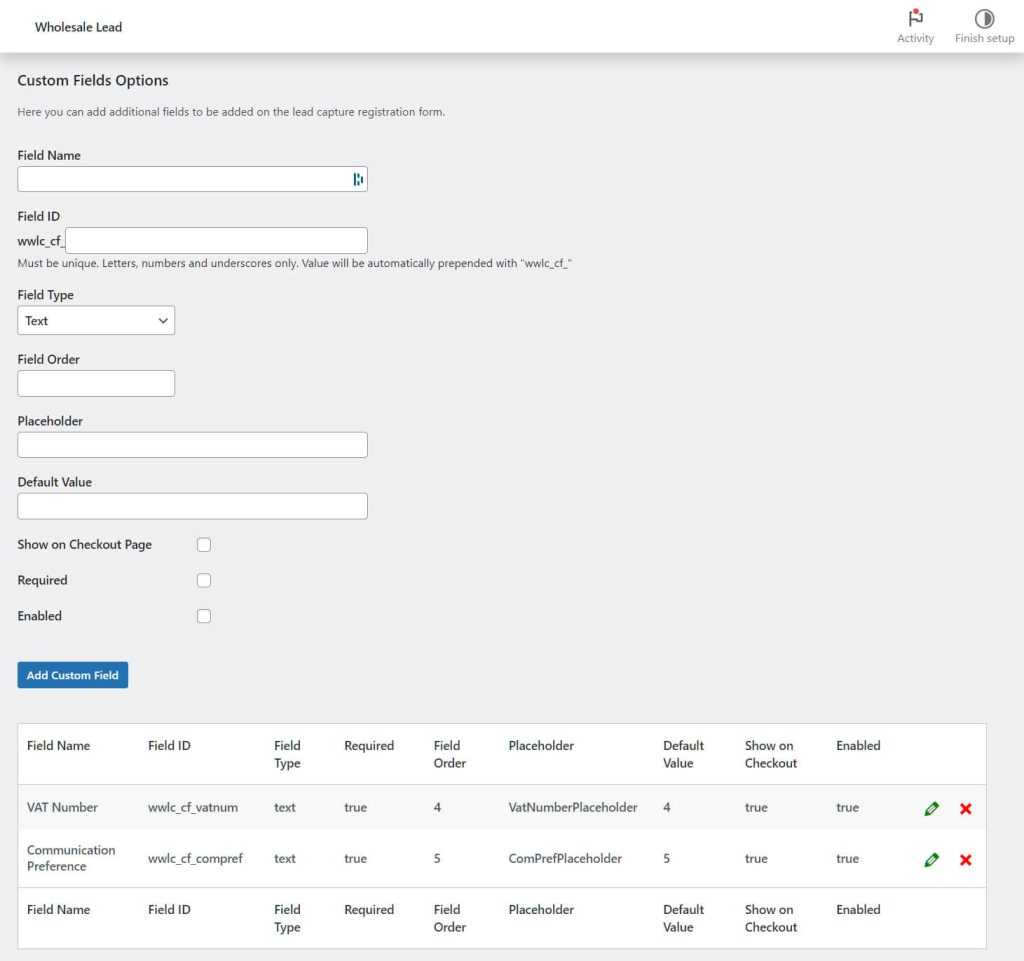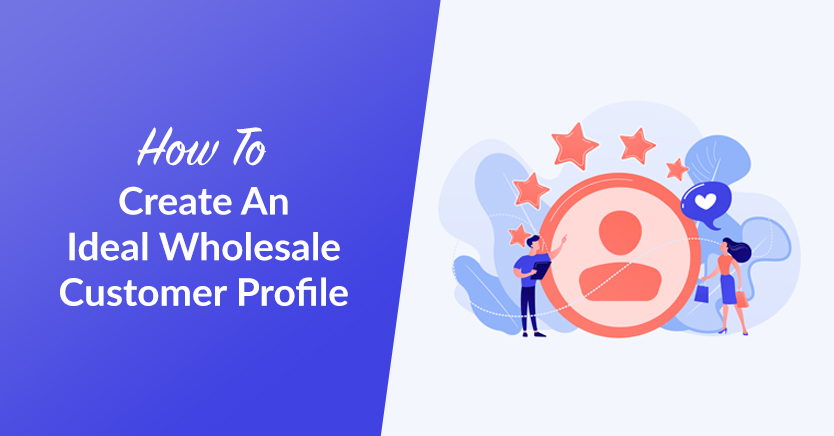
Every store has an ideal customer. These are the buyers that keep coming back, have deep pockets, and never demand too much attention. If you plan on running a successful store, you need to have an idea of what your ideal wholesale customer profile looks like.
The concept of a customer “profile” is simple. In practice, most customers always fit into some type of persona. Your ideal customer persona should be the type of client that benefits your store the most and that causes the fewest problems.
In this article, we’ll talk about the concept of customer personas and why you need to figure out yours. Then, we’ll discuss the characteristics that make for an ideal wholesale customer profile. We’ll even give you tips on how to create your target customer persona.
So let’s get to it!
What Are Customer Personas Or Profiles?
Understanding who your customers are is essential if you plan on running effective marketing campaigns. After all, the messaging that might resonate with one type of customer might not be as effective with another. Thus, if you don’t know who your “best” customers are, you run the risk of alienating them.
Customer profiles are models that you create based on your real customers. If you collect analytics, you’ll have access to plenty of information about customers, such as their:
- Location
- Age group
- Interests
- Gender
- Buying behavior
In modern times, collecting all this data isn’t difficult. Free tools such as Google Analytics will give you access to staggering amounts of information concerning your website’s visitors:
WooCommerce also provides you with plenty of data about customer behavior and orders. When you combine that information with analytics from third-party resources, you get all the pieces that you need to assemble customer profiles:
If you’re using Wholesale Suite, you can also take advantage of the integration with Metorik. This software connects with both WooCommerce and Wholesale Suite to provide you with in-depth analytics about your customers and how they behave within your store.
What Makes For An Ideal Wholesale Customer Profile?
Naturally, you want your business to attract customers who order frequently, have a high order value, and are easy to deal with. However, that’s not a realistic customer profile. If you want to target the right customers, you need to craft more in-depth personas that you can market to.
Here are four characteristics to keep in mind when creating a wholesale customer persona.
1. Geographic location
One of the biggest challenges of running a wholesale store is shipping. Since you deal with massive orders on a regular basis, you need to ensure that shipment proceeds without an issue. That means:
- Reducing shipping times and costs as much as possible
- Offering quality packaging
- Using shipping services that customers like
As the distance between you and your customers grows, so do the challenges associated with shipping. Ordering wholesale from halfway around the world can be a headache.
There are many horror stories from stores ordering from wholesale distributors located continents away. It’s no surprise a lot of customers are wary about ordering from a wholesale store that can’t provide support due to geographic restrictions.
With that in mind, your ideal wholesale customer persona should be relatively local. That means customers to whom you can ship products quickly and without too many complications. How big that geographic range is will depend on shipping logistics and the types of products that you’re selling.
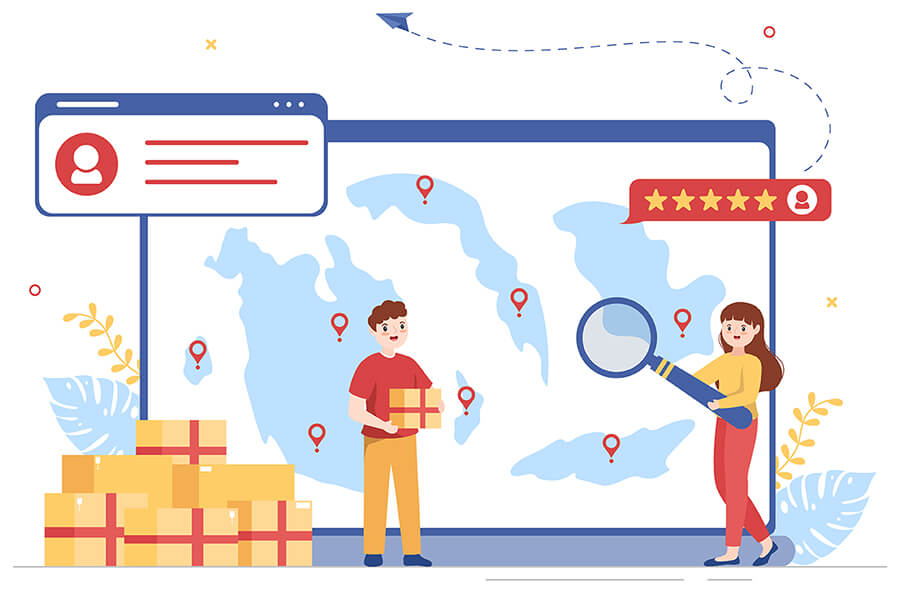
2. Demographics served
When you sell wholesale, it’s important to understand that the people who buy from you are usually not the end-users of your products. Your customers are distributors with their own stores who buy from you to sell retail at a markup.
That distinction is important because you need to know who your customer personas are selling to. One way to do that is to ask the following questions:
- What age are the people that use these products?
- What do customers use my products for and what pain points do they solve?
- Where are most end-users located and what is their gender?
- Is there a time during the year when people use these products more?
The answers to those questions will help you market products more effectively to your own customers. A lot of distributors look for customer information when they buy products wholesale. That means they expect you to provide insight into how they can sell products and even retail pricing recommendations.
A lot of wholesale stores limit themselves to sales only. Providing support and information for your ideal wholesale customers will help differentiate your store and encourage users to keep returning to you.

3. Store type
Not every wholesale customer will resell your products using the same channels. Some might sell online only, whereas others will also have physical locations to showcase your products in.
Ideally, you should know what store type each of your customers uses. That way, you can determine what type of stores sell more products and which ones buy more products from you.
It can be hard to know what store type your customers run unless you use a custom wholesale user registration form. Wholesale Lead Capture lets you set up wholesale registration forms that include any fields you might need:
With this plugin, you can ask users what channels they plan on using to sell your products before you approve their registration. Afterward, you can simply keep tabs on which customers are making the biggest orders.
4. Buyer profile
Moving on from logistical considerations, an ideal customer profile needs to contain data about the users themselves. Thanks to analytics, you already have some of that information, including:
- Geographic location (we already covered this one)
- Interests
- Demographic data such as age and gender
- Their position within the business
If store owners are the ones doing the actual purchases, that’ll be part of their customer profile. However, many stores have dedicated buyers whose job is to restock inventory. In such a case, your customer profile needs to note their position within the business.
The way you market products will differ depending on whether you’re dealing with a store owner or an employee. Business owners may be more interested in information about price ranges as well as how to market and resell products. On the other hand, employees will likely focus on quick shipping times and having access to support in case anything goes wrong.

8 Ways To Define Your Target Market
While many online business owners have amazing products and well-designed online stores, some lack a clearly defined marketing strategy. And one of the most important parts of your marketing strategy is to define who your target customer is.
Rather than hitting all the birds with one stone, it’s better to determine which birds (i.e. customers) would most likely buy your products and become loyal customers. This will save you a lot of money, time, and effort in the long run.
Keeping in mind what we’ve learned about what makes an ideal wholesale customer profile, let’s jump into the eight strategies you can use to define your target wholesale customer persona!
1. Ask the 5Ws and 1H
To help you define your target wholesale customer persona, you can start by asking the basic 5Ws and 1H – who, what, when, where, why, and how. To break it down, you can brainstorm with your team to identify:
- Who are your existing customers? Who are your ideal customers?
- What are their interests?
- When do they decide to buy?
- Where do they usually buy? Where do they find your online store?
- Why should they buy your products? Why do they buy your products?
- How do they make a purchase? How do they sell your products?
You can ask many other questions to help you define your target market, but these are a good start.
2. Examine your existing customers
To determine your target market, you can also take a look at your existing customers.
According to Bizfilings, you can define your target market by learning more about your current wholesale customer base. For example, your analysis can help identify the types of clients who purchase from you the most and the characteristics common among them.
Such information can allow you to segment these customers into groups so that you can reach out to them based on their behaviors or characteristics. This, in turn, can help you better tailor your marketing efforts to different audience subsets, which can boost your conversion rates.

3. Identify key points
According to Hubspot Academy, you can determine your ideal customers by identifying the following key points:
- Background (i.e. role, company information, family)
- Demographics (i.e. age, gender, income)
- Identifiers (i.e. buzzwords)
- Common objections
- Goals and challenges,
- How you can help your customers
- Quotes from existing customers
Bizfiling also recommended looking at the lifestyle information about individuals. Thus, scrutinize information such as wholesale customer behavior, hobbies, recreational activities, beliefs, values, religion, life stage, etc.
Putting all this data together can point you towards the types of individuals whose concerns you can solve and who are most likely to do business with you. Such individuals will form your target wholesale customer base.
4. Make a basic profile of your target wholesale customer
To define your target market, it’s helpful to create a basic profile of your ideal wholesale customer. This can include giving your target customer a name and creating a basic description of their characteristics (including how they look like).
Once you’ve generated your ideas, you can better identify your target customers and plan your marketing strategy accordingly. It’s important to refine and filter your ideas to determine which target customers are the most ideal for your marketing efforts.
It’s also crucial to review and ensure that your customer profile accurately represents your target market. By doing so, you can effectively tailor your marketing efforts to your ideal customers and increase your chances of success.

5. Identify wholesale customer problems that you can solve
When it comes to defining your target market, Marketing Donut states that one good starting point is to understand the wholesale customer issues that your business can solve. From here, you can identify those in your wholesale customer base most likely to experience these problems.
In addition, Marketing Donut stressed the importance of internal reflection regarding your business. This can help you determine your expertise and the factors that make your company and products stand out. Such information, when considered alongside the wholesale customer problems your business can solve, can help you pinpoint your ideal customers.
6. Recognize your customers’ primary motivations
Knowing your customers’ motivations can help you identify your target market in several ways.
For starters, understanding why people purchase your products can help you determine who your product is best suited for. For instance, if your product appeals primarily to health-conscious individuals who are motivated by the desire to live a healthy lifestyle, you may identify your target market as health-conscious consumers.
Moreover, knowing your customers’ motivations can help you identify new potential customers who share similar motivations. By examining your existing wholesale customer base, you can identify common themes or trends in their motivations, then use this information to identify new target markets to explore.

7. Look at what your direct competitors are doing
As you already know, your direct competitors are other businesses that offer products that are essentially the same as yours. Thus, their customers will likely be interested in your products as well, which means they can also be your customers. And among their number, you’ll find those most likely to choose you over your rivals.
Competitor analysis allows you to determine the marketing strategies that are most effective in encouraging customers to buy specific products. Then, you can modify your efforts to suit the needs and preferences of the customers whom your business is uniquely positioned to help. These individuals can serve as your target market.
In addition, learning about your business rivals’ strengths and weaknesses can help you identify gaps in the market that you can fill, giving you a competitive advantage.
8. Determine consumers’ major influencers
Forbes highlighted that customers tend to look up to specific influencers that have the power to sway their purchasing decisions. These influences can be celebrities, experts, icons, trusted brands, credible online news sites, politicians, or even immediate friends or family.
If an influencer sponsors or shows extreme interest in a product similar or identical to yours, then their fans may serve you well as customers. For this reason, study the influencers your customers love as well as those who are associated with your direct competitors’ products. Then, research these influencers’ audiences – you’re likely to find your ideal customers among them!

Monitor And Evaluate Your Marketing Efforts
Defining your target market is important in business. Without it, you’ll be no different from a person searching in the darkness for something they know nothing about.
But what do you do after you’ve defined your target wholesale customer persona?
Your next step is to monitor and evaluate your marketing strategy to assess its strengths and weaknesses as well as identify the areas that need improvement. We recommend checking your marketing strategy monthly or quarterly; this can tell you whether or not your efforts are producing favorable results. In addition, make sure to adjust your marketing strategy whenever necessary so that it remains aligned with your business goals.
Once you have a great idea of who your target market is, you can develop an effective marketing strategy for your online business.
Conclusion
Having an ideal wholesale customer profile provides you with insight into who your best buyers are. That information can help you when creating marketing campaigns, deciding how to promote products within your store, and choosing what offers or discounts to make.
Narrowing down what your ideal customer profile is can be a challenge. Here are the characteristics that you should consider when building a profile:
And here are eight great ways to identify your ideal target market:
- Ask the 5Ws and 1H
- Examine your existing customers
- Identify key points
- Make a basic profile of your target wholesale customer
- Identify wholesale customer problems that you can solve
- Recognize your customers’ primary motivations
- Look at what your direct competitors are doing
- Determine consumers’ major influencers
Do you have any questions about how to create a wholesale customer profile? Let’s talk about them in the comments section below!


